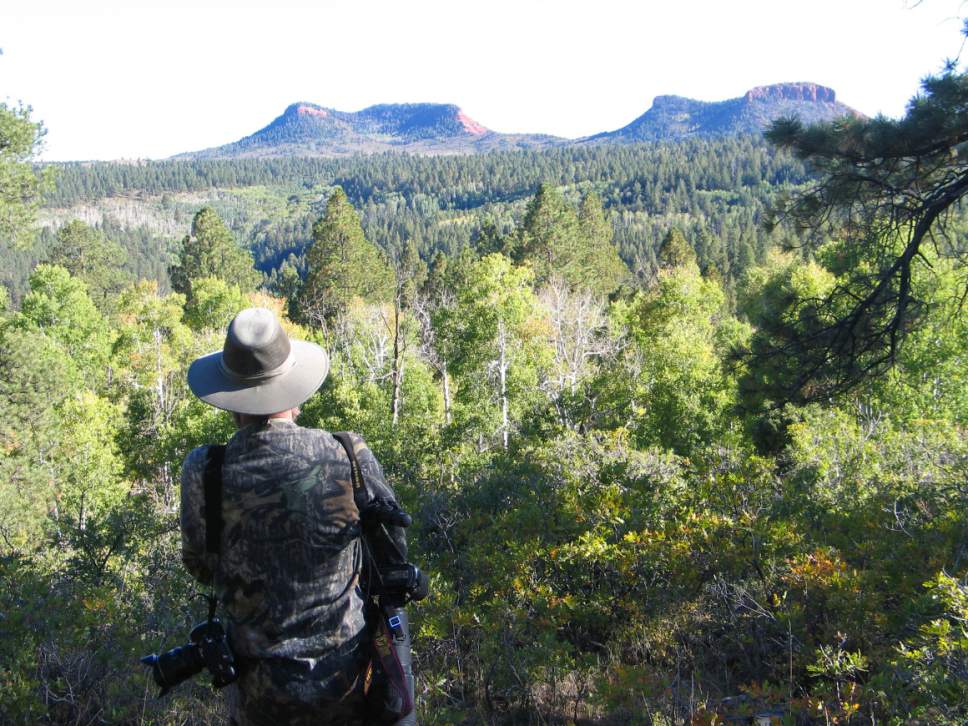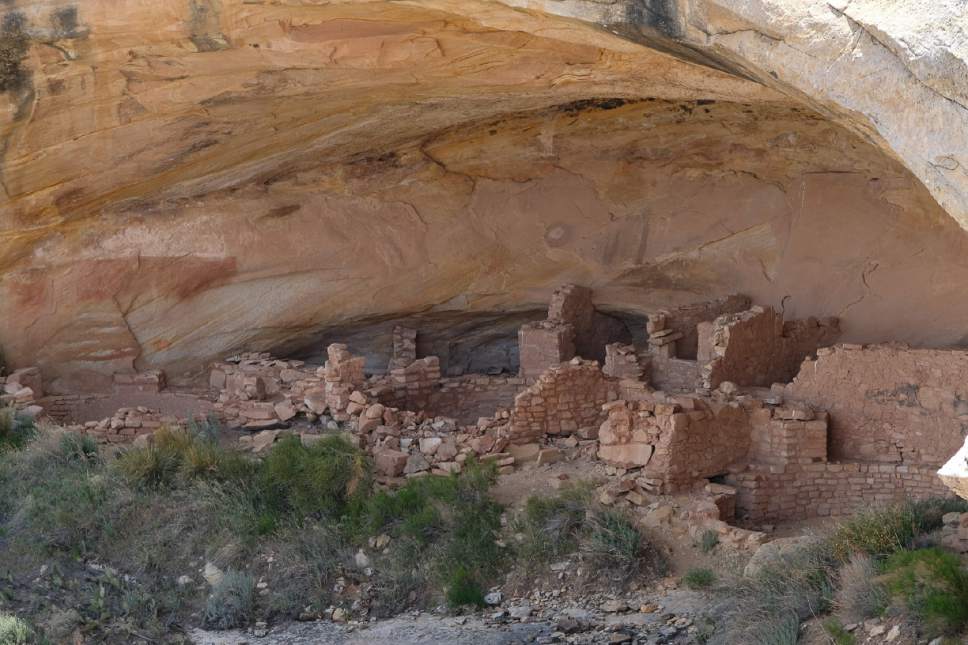This is an archived article that was published on sltrib.com in 2017, and information in the article may be outdated. It is provided only for personal research purposes and may not be reprinted.
The creation of Bears Ears National Monument is a unique story born out of the dust and heat of the Wild West.
For decades, looters pillaged this extremely rich archaeological wonderland. The infamous San Juan County local, Earl Shumway, did a number on the Native American graves in the region and even threatened the lives of law enforcement officers. Of course, the local families of San Juan County saw collecting artifacts as an exceptional pastime. The Bears Ears served as their private treasure chest.
A raid in 1986 seized hundreds of artifacts but did nothing to hinder the abuses. One of Blanding's town physicians was caught with his wife digging up graves in the 1990s. There was no jail time for either one of them. Another, larger raid in 2009 lead to many arrests, but all charges were dropped. Of course, this is a major sore spot for locals who have a deep-seeded distrust and hatred of the federal government though they ironically receive large federal grants and subsidies.
The lack of justice alarmed many as the locals proved themselves less than trustworthy stewards. Around this time, local Native Americans came together and found common cause to protect the spiritual and archaeological sites contained within the Bears Ears region. Years of cold shoulders and run-arounds by county and state officials forced them to do something unimaginable.
Over the course of seven years, they developed a coalition of five tribes with ancestral ties to the land but also long-standing animosity for one another. For the greater good, the tribes united for this common goal, and gained the support of hundreds more. Together they formed the Bears Ears Intertribal Coalition, and with partners in outdoor recreation and environmental groups, they built a movement to save Bears Ears as a national monument.
The Obama administration heard their message, but they were fully aware of the political atmosphere in Utah. The administration stalled for years as the Utah congressional delegation worked on the Public Lands Initiative, an attempt to balance land protection and development in the state. This legislation labeled a "compromise," had no input from Native American tribes and actually sought to seize land from the Uintah-Ouray Ute for private oil and gas development. The poorly designed bill had opposition from both sides of the Bears Ears debate and ultimately sank. Only then, when Congress failed, did President Obama sign the national monument designation.
The end product had 600,000 fewer acres than the proposal set forth by the Bears Ears Intertribal Coalition. The boundaries appeared roughly congruent with those sought by the Public Lands Initiative. Concerns about continued access were addressed with specific language outlining preservation of traditional practices including cattle grazing, medicinal plant picking and gathering of firewood. Only new mining, drilling and fracking became outlawed.
Now local opposition to the monument has powerful backing from the right-wing Sutherland Institute, which receives funds through organizations linked to the Koch brothers. Facebook pages, TV ads, Instagram accounts, YouTube videos and letters to newspapers have burgeoned. All the while, locals intimidate and harass monument proponents across social media. The brave locals in support of the monument have grown quiet due to fear of reprisals in the county, but the tribes and their leaders stand firm. Indeed, the outpouring of nearly unanimous support during the public comment period for Bears Ears National Monument, which ends Monday, shows the tribes don't stand alone.
Moving forward, this saga will likely transition needlessly to the courts as Interior Secretary Ryan Zinke and the Trump administration seek to downsize and rescind national monuments across the country.
Garon Coriz is a tribal member of Santo Domingo Pueblo, N.M. He currently works as a family and emergency medicine physician in rural Utah.





